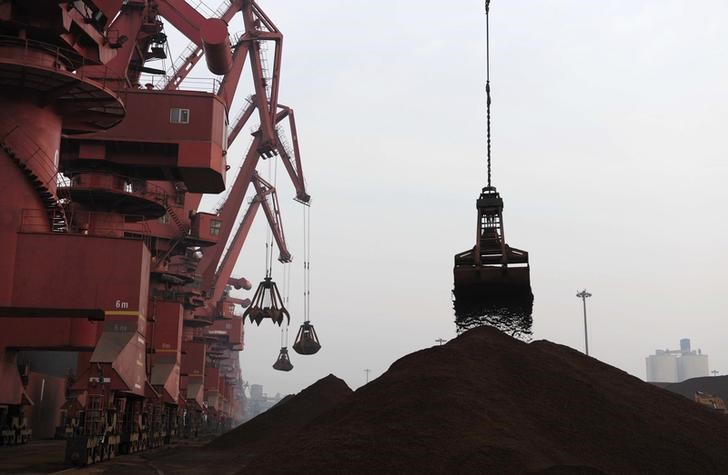(The opinions expressed here are those of the author, a columnist for Reuters.)
By Clyde Russell
LAUNCESTON, Australia, Nov 24 (Reuters) - As the once-in-a-lifetime commodity boom winds down, a key concern has been what is going to replace the mega-projects built to feed China's appetite for natural resources.
The huge minerals and energy projects that were both the solution and the demise of the China-inspired commodity super-cycle are unlikely to be repeated any time soon, but developments in Australia show it's not all doom and gloom.
Australia was one of the biggest beneficiaries of the dramatic rise in China's demand for commodities, with more than A$400 billion ($300 billion) being spent in the last decade.
But with the last of these major projects close to finishing construction, there are widespread fears that the resource sector has very little in the pipeline to employ the army of skilled labour built up during the boom years.
It's certainly true that there are very few large projects likely to start construction in the next few years, with high-profile ventures such as Adani's A$16 billion Carmichael coal mine still not a certainty to proceed.
It's the same story with the second-phase expansions of the eight liquefied natural gas (LNG) plants that have either been built or are nearing completion.
A saturated market for the super-chilled fuel means expansion plans are unlikely to proceed, at least in the medium term.
The last of the massive iron ore projects, the 56-million tonne a year Roy Hill mine, is busy ramping up and it's likely the last of its kind for some time as miners, led by top producers Rio Tinto (LON:RIO) RIO.AX and BHP Billiton (LON:BLT) BHP.AX , concentrate on running existing operations as efficiently as possible in a bid to make decent returns on the massive investments of the past decade.
However, the emphasis has shifted back to the junior mining and energy sectors, with a raft of small-scale projects progressing as entrepreneurs seek to exploit more niche opportunities within the broader commodity sector.
LITTLE GUYS TO THE FORE
While these ventures won't employ nearly as many people as the mega-projects did, they do provide the opportunity to keep skilled people in the industry and create something of a mini-boom.
An example of this new type of project is the Cleveland tin mine in the remote northwest of Tasmania, Australia's southern island state.
This old mine stopped operating in 1986, but junior mining company Elementos ELT.AX is planning on bringing it back to life to exploit rising demand for the metal, which is mainly used as solder in manufacturing.
A visit to the mine shows the scale of the challenge, as much of the prior infrastructure is overgrown by the surrounding temperate rainforest, but Elementos plans to first re-process the old tailings dams before resuming underground workings.
This is a smart strategy, as re-processing the tailings is relatively simple and will provide capital to restart underground operations, while at the same time winning environmental kudos as the dams are currently leaching into nearby creeks.
Elementos isn't alone in looking at this sort of project, with several other similar tin and nickel ventures trying to re-process old mine workings or restart abandoned deposits.
New mining technology and sharper management focus on costs are breathing life into old mines and mineral deposits across Australia, with companies like Metals X MLX.AX , Stellar Resources SRZ.AX and Thomson Resources TMZ.AX trying to progress projects.
What is different this time around is that these junior miners are actually intending moving to production, a break with the usual practice of the past of proving up the resource as an exploration company in the hope of attracting a buyout from a larger player.
The method of financing of these companies also appears to be shifting away from the past use of raising equity capital and bank loans.
With banks reluctant to underwrite small resource projects and risk appetite among sharemarket investors low, the smaller companies are turning increasingly to what could loosely be termed wealthy investors and to some extent, private equity.
The proliferation of smaller projects also takes in a wide variety of commodities, from lithium to tin to gold and even natural gas.
It's hard to quantify the exact amount going into these ventures, as the government's main commodity information resource, the office of the chief economist at the Department of Industry, focuses mainly on larger projects with values above A$50 million.
But one thing is for certain, small commodity companies in Australia are starting to get noticed, with the Australian Stock Exchange's Small Resource Stocks index .AXSR jumping 61.3 percent from the end of last year to the close on Tuesday.
It seems the next commodity boom is well and truly underway.
(Editing by Joseph Radford)
